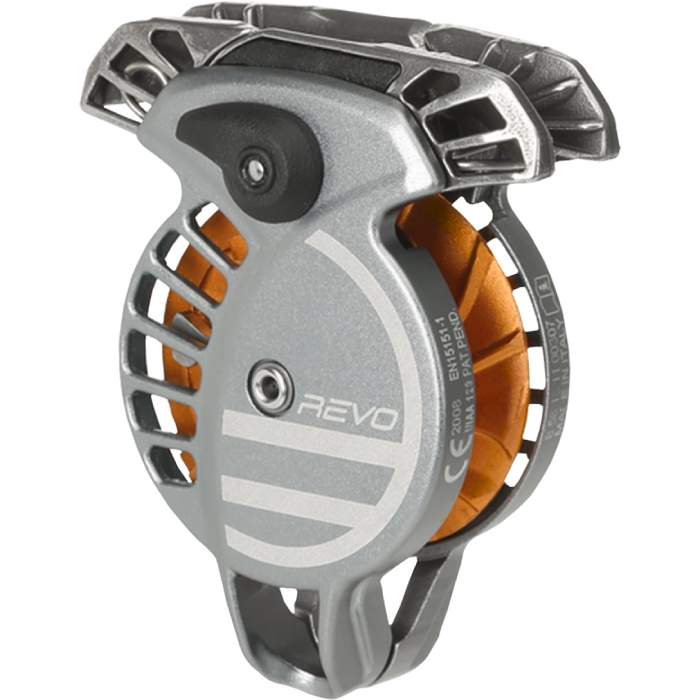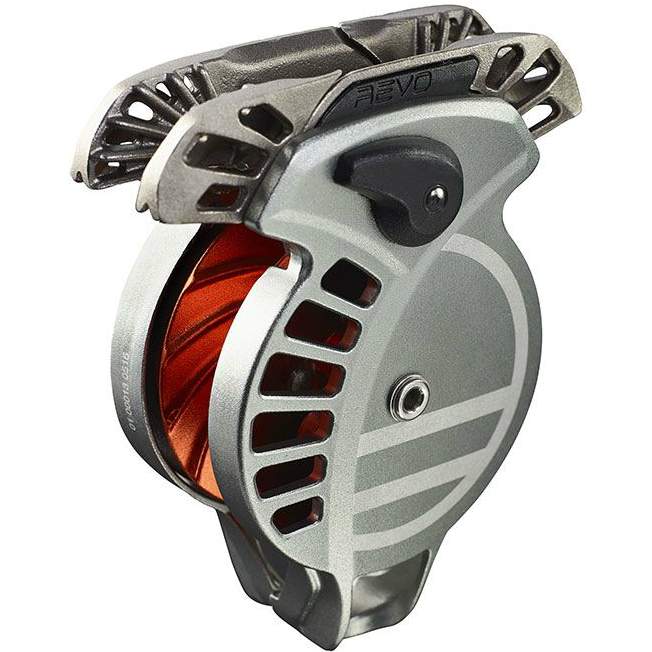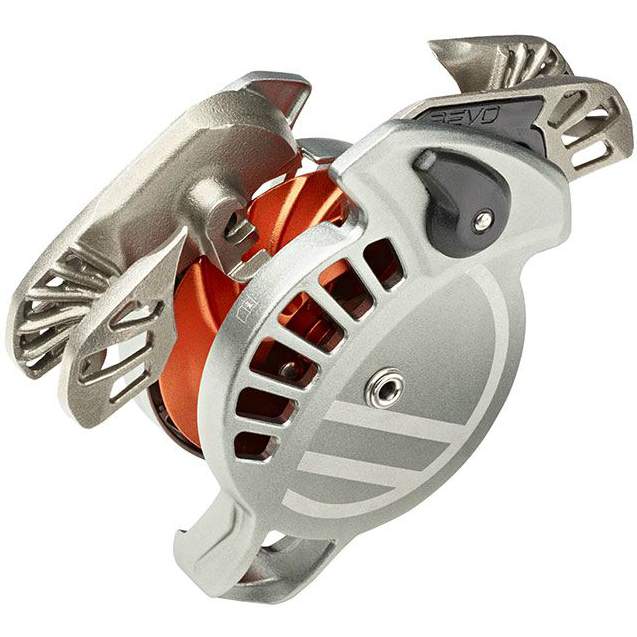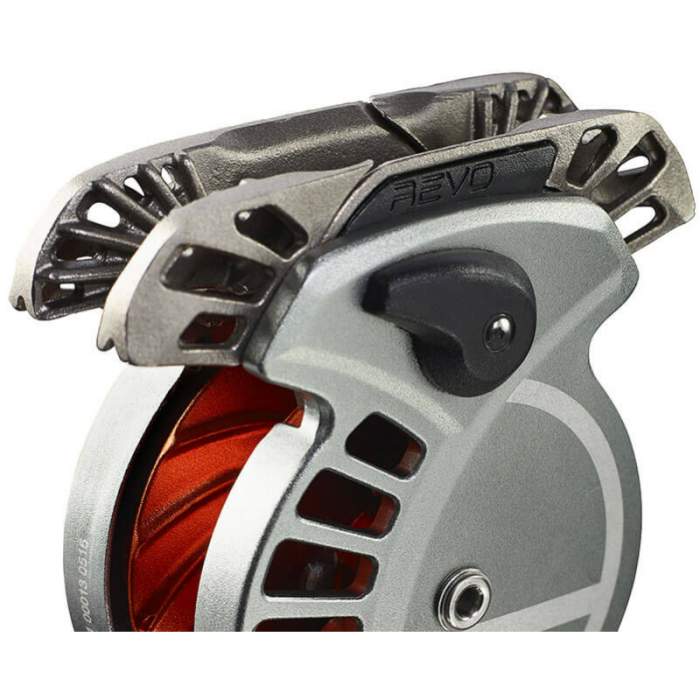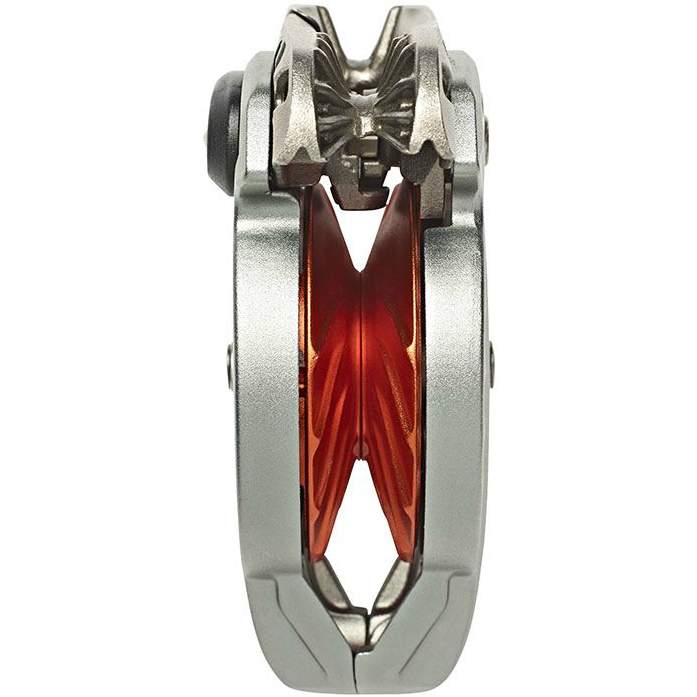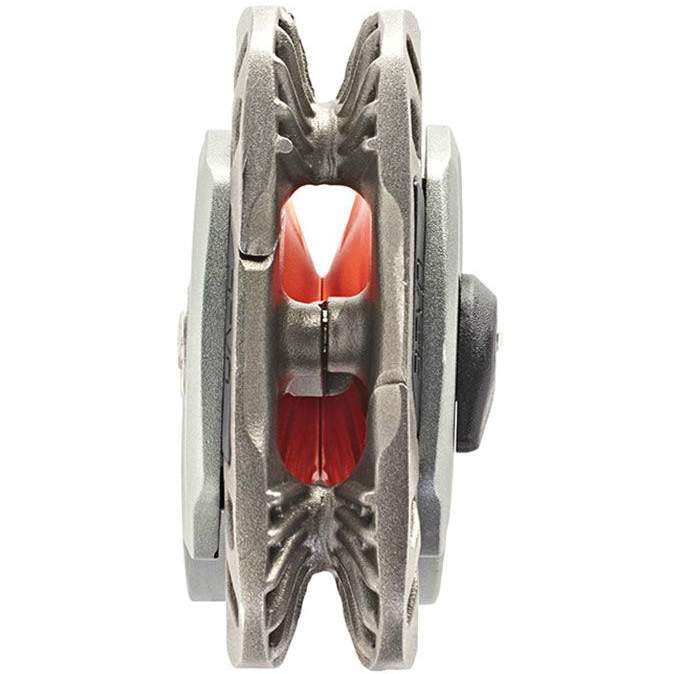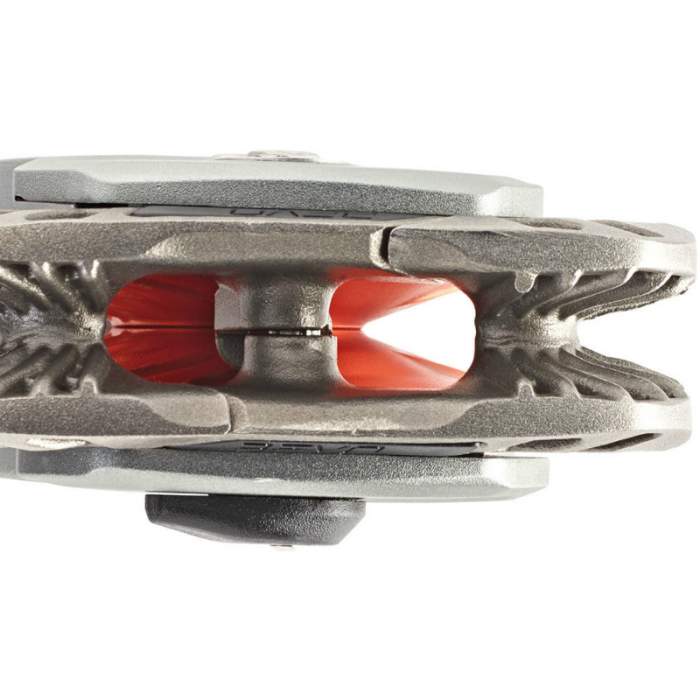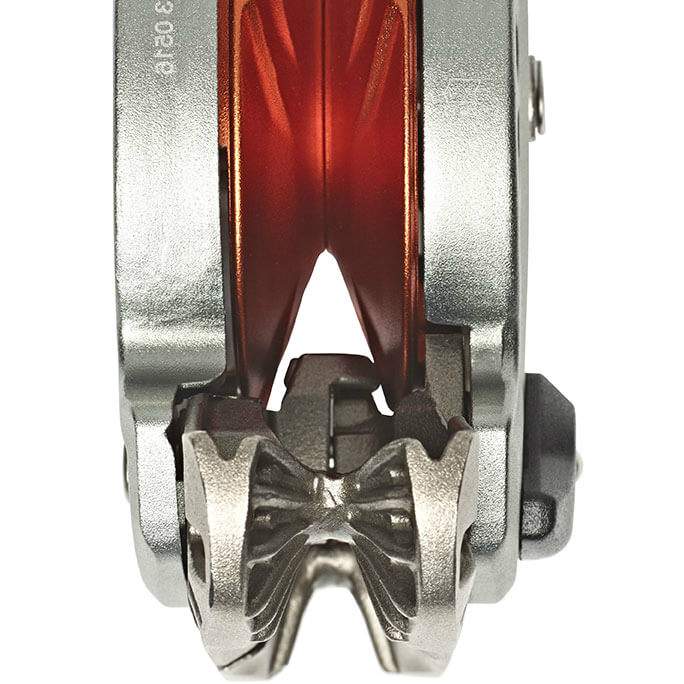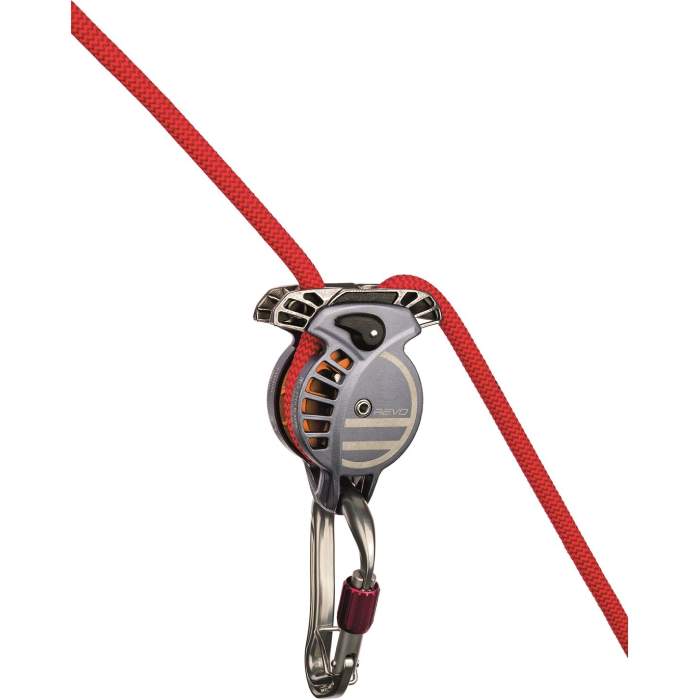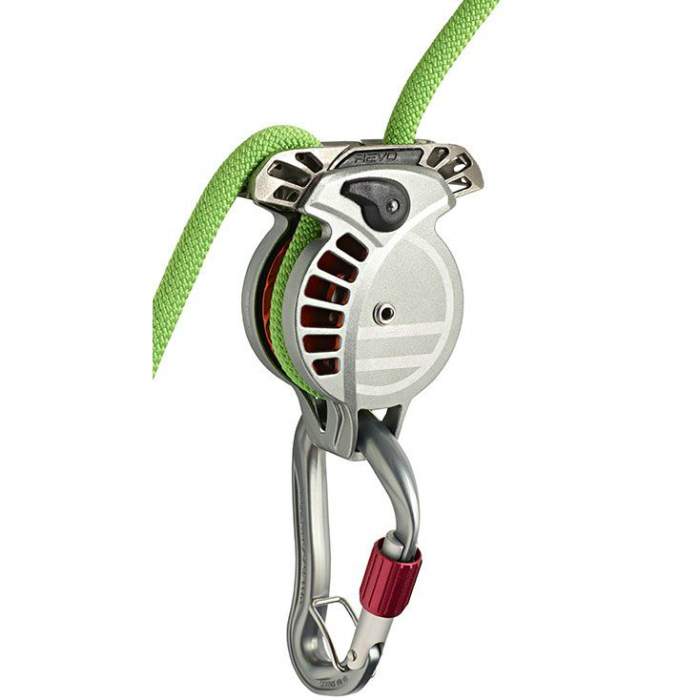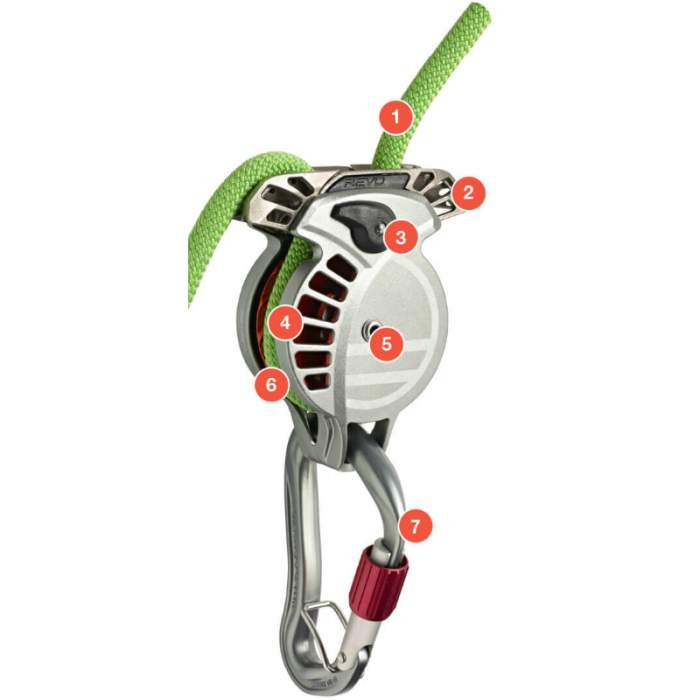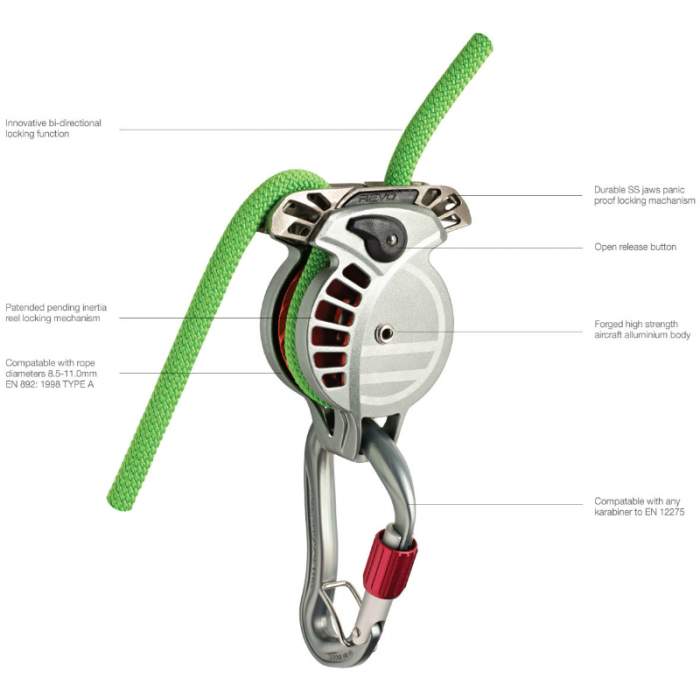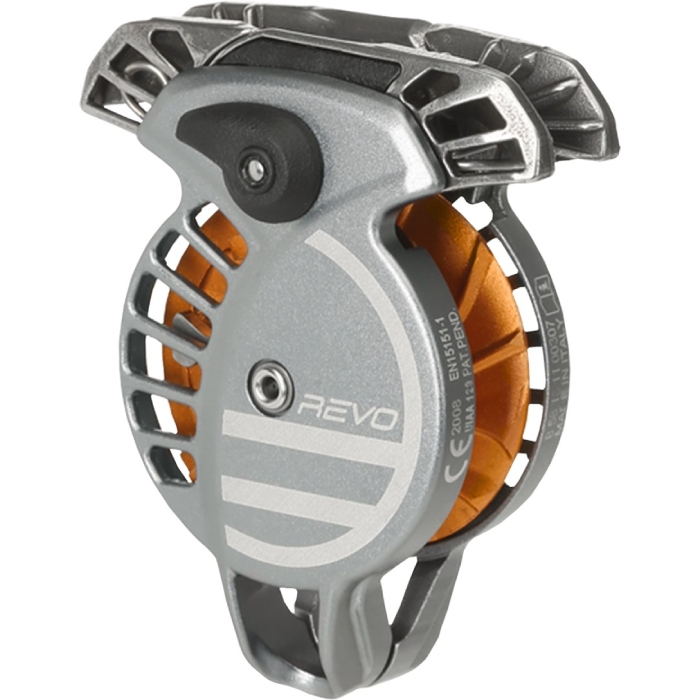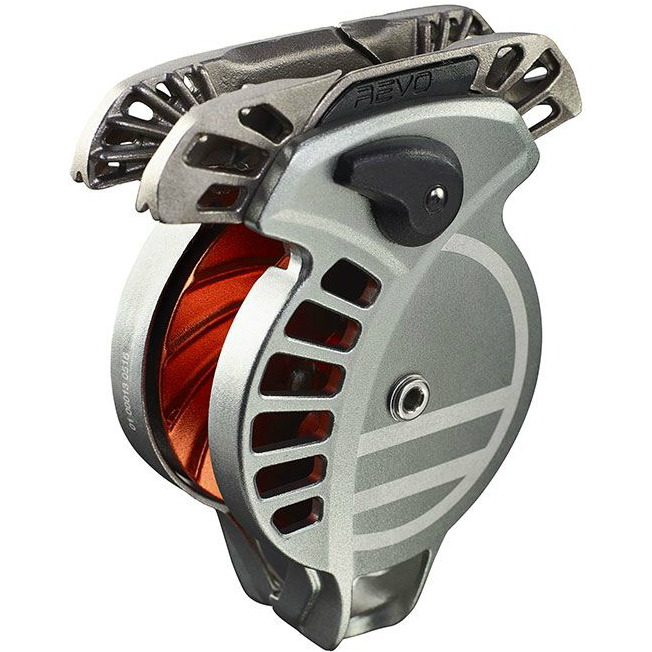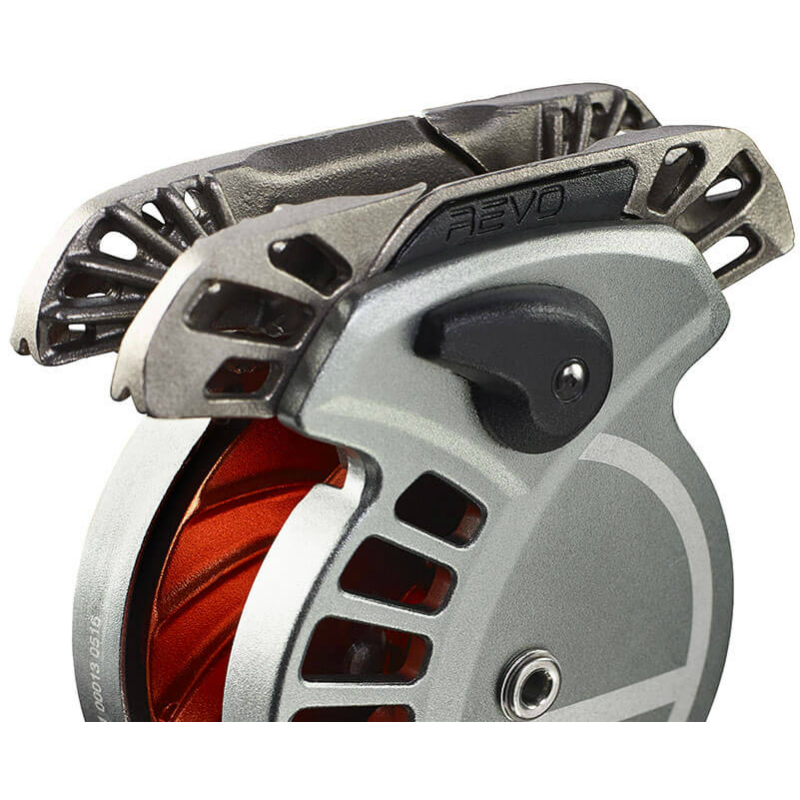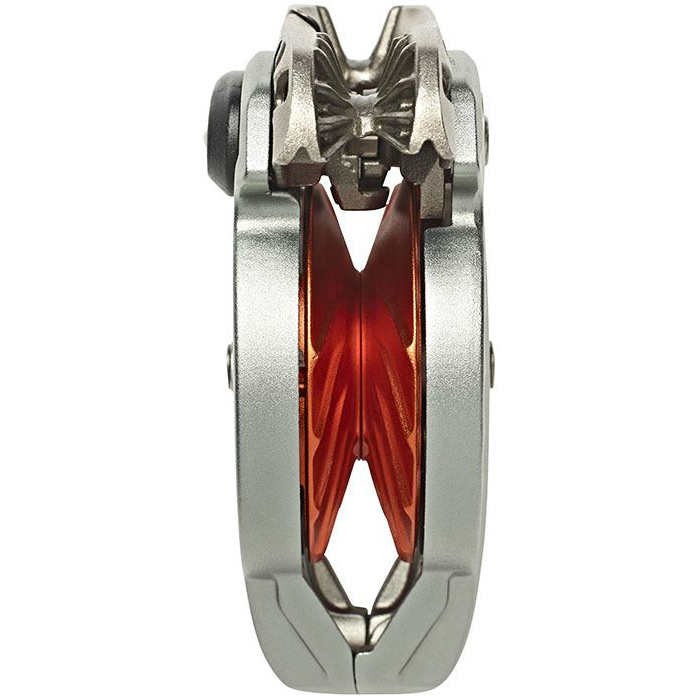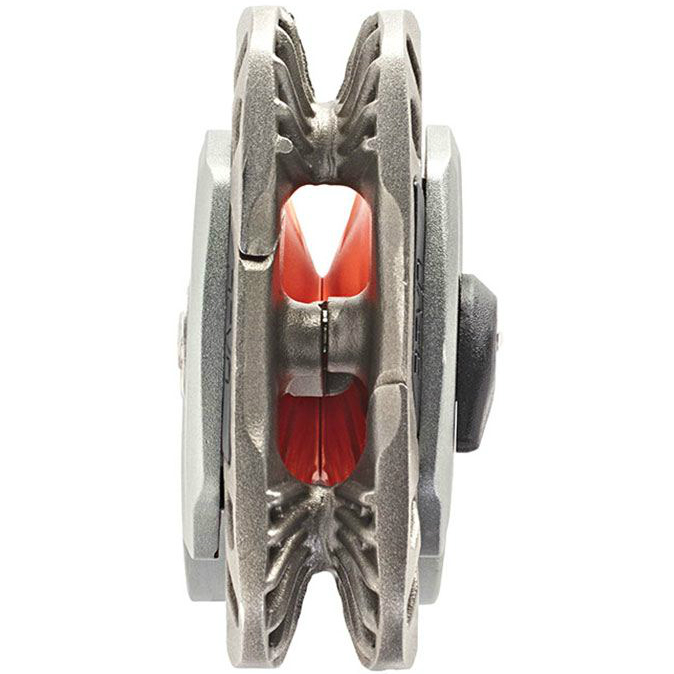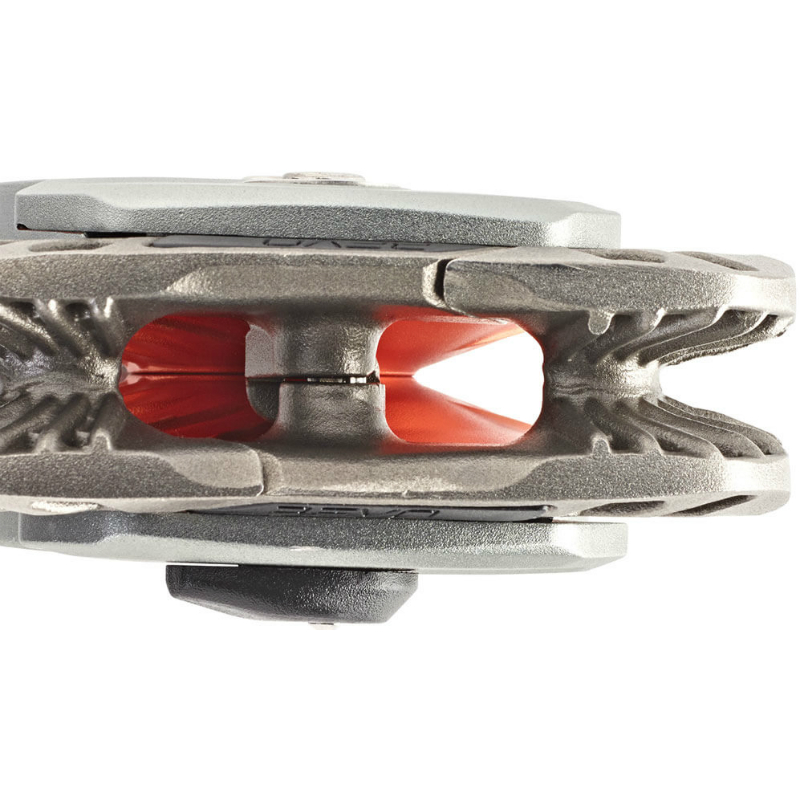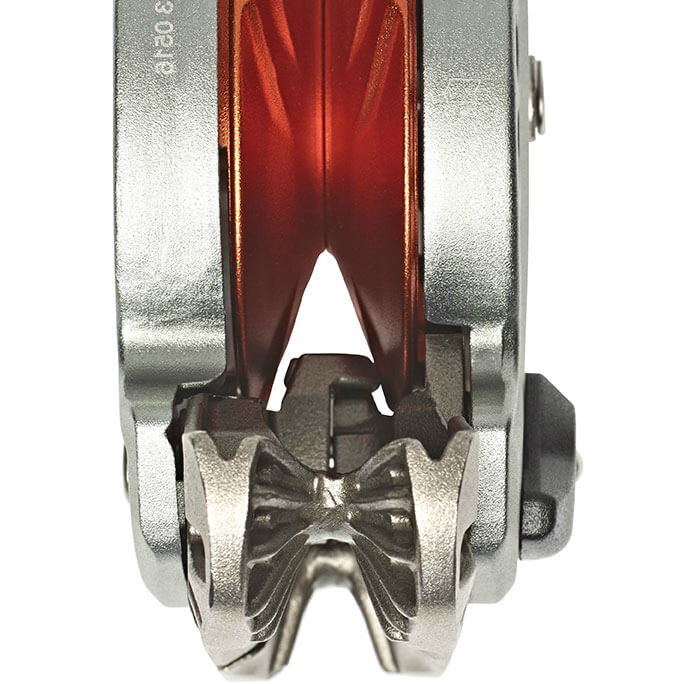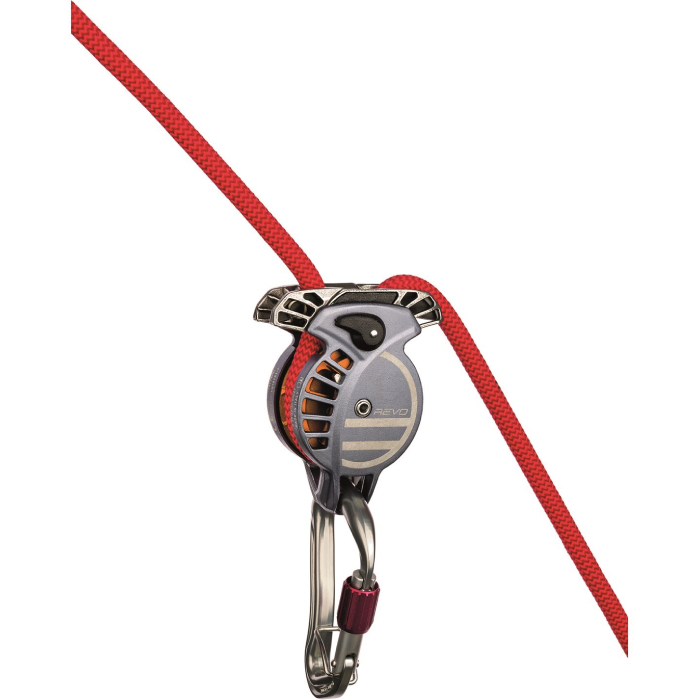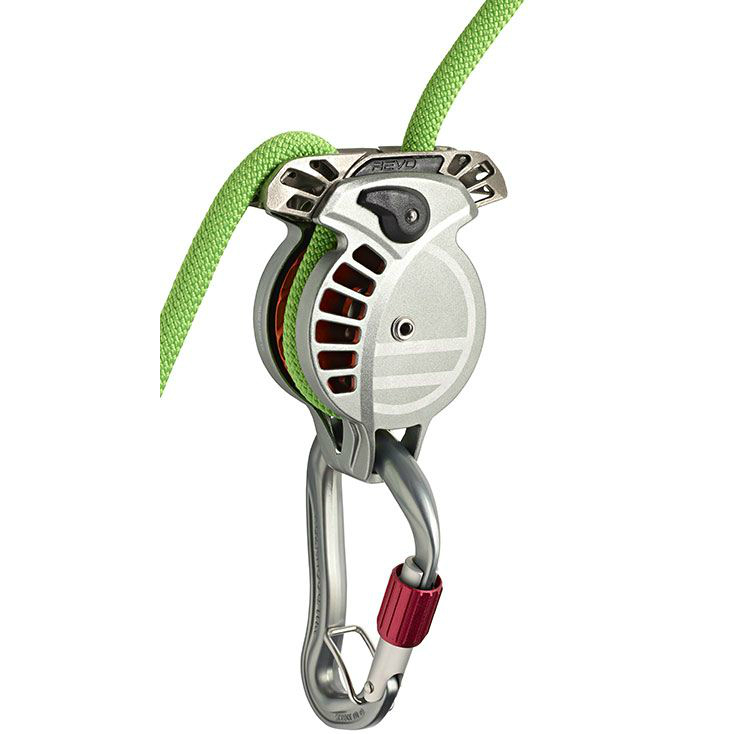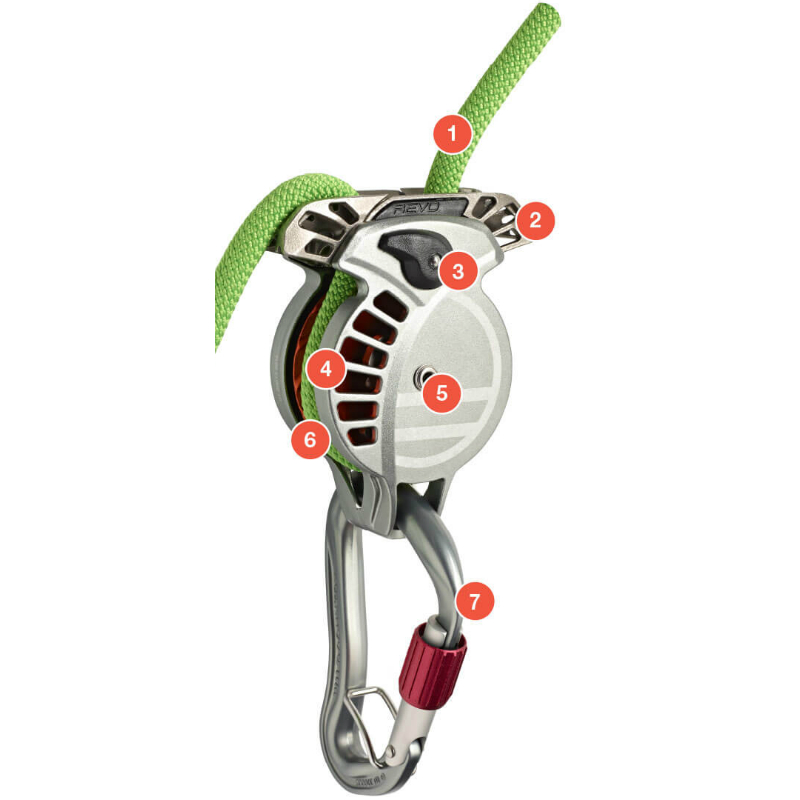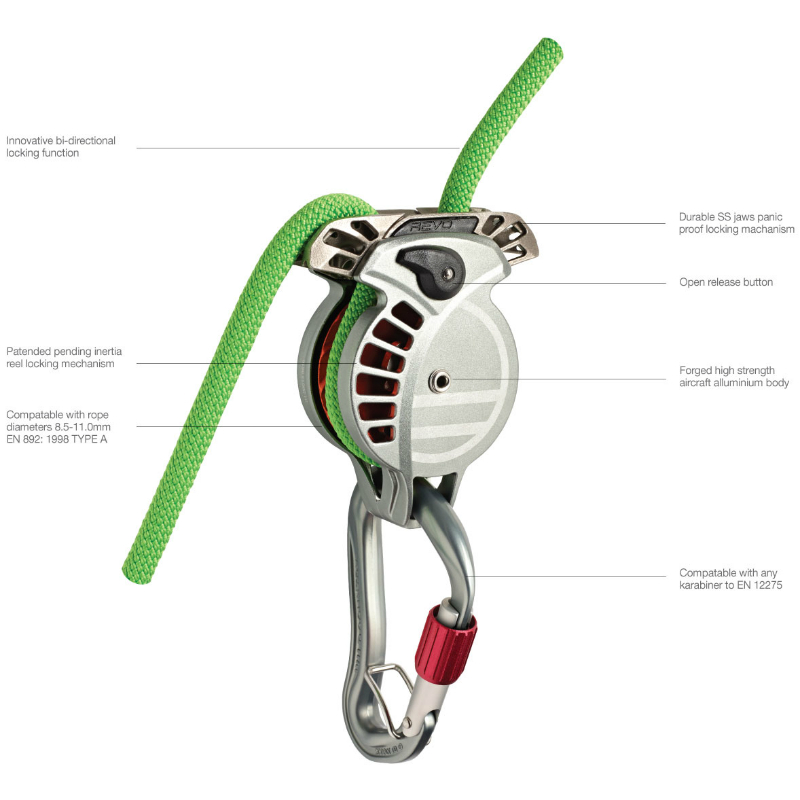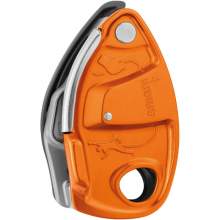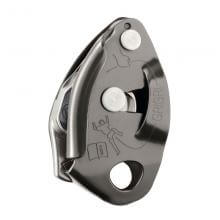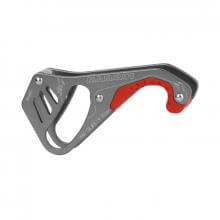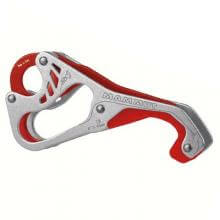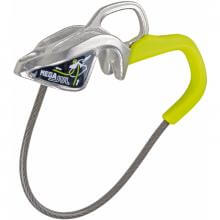Revo
Description
Its function is independent from the loading orientation of the rope, thus eliminating one of the most common causes of belay related accidents. Irrespective of the situation, an uncontrolled descent will cause the inertia reel to activate, grip the rope and arrest the fall. The innovative panic-proof locking mechanism (pat. pending) removes the necessity for a handle to unlock the system when lowering the climber. The device is intuitive to use like a traditional belay plate and is thus suited for both the novice and expert alike.
The clever combination of these features makes the Revo the safest belay device on the market.
The innovative panic-proof locking mechanism (pat. pending) removes the necessity for a handle to unlock the system when lowering the climber. The device is intuitive to use like a traditional belay plate and is thus suited for both the novice and expert alike.
The clever combination of these features makes the Revo the safest belay device on the market.
Design Features:
The only automatically locking belay device which:
- Has a completely panic-proof locking mechanism. The Revo has no method of over-riding the locking mechanism, during belaying, or when lowering a climber.
- Is bi-directional, the locking function works regardless of the rope orientation.
- Has an intuitive belaying method, which requires no changes to standard belaying technique.
- Has no need for a specific locking karabiner.
- All of these USP’s contribute to make the Revo the safest belay device available.
Retail price
When you click a link below and then checkout online, no matter what you buy (climbing gear or not), we get a small commission that helps us keep this site up-to-date. Thanks!





Device Type  Device TypeTubeThe most commonly used belay type also called an “ATC” or “tuber.” Other than a distinction between other belay device types, “Tube” is a rarely used term, most climbers just assume you're talking about this style when they refer to your "belay device." 
Figure 8Mostly used in rescue, canyoneering, tactical, work safety, or by old school climbers and rappellers. One reason they went out of popularity with recreational climbers is because they tend to create twists in the rope. 
Brake AssistThese devices assist in stopping the rope when a climber falls or hangs on the rope. 
Often referred to as “auto-blocking” but that’s not the official terminology because no belay device should be assumed to work automatically by itself, even if it feels like it does (or does most the time). PlateWhen simplicity is a must, or you started climbing before Tubers were the norm. Bonus: They tend to be very light weight. 
DescenderFor rappelling, not for belaying a lead climber or top-roping. 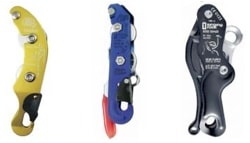 |
Brake Assist - Mechanical |
Weight (g)  Weight (g)In grams, the weight, as stated by the manufacturer/brand. |
245 g |
Belay Brake Assist  Belay Brake AssistThis is when the belay device significantly reduces the amount of holding power the belayer must exert to stop a fall and hold a climber. This is also called "assisted-braking" as the device must hold a significant amount of the climber’s weight; this term does not include friction-adding "teeth" found on some tube style belay devices. Confusingly referred to as “auto-blocking” or “auto-locking” these terms wrongly imply the device will always, automatically, stop a fall or hold a climber even if the belayer/rappeller is hands-free. These devices are not meant to be used without a hand on the braking side of the rope; the belayers/rapppeller brake hand should always be on the brake rope. Worth ConsideringMost of the mechanical brake assist devices only hold a single strand of rope and are not capable of double-strand rappelling (the most common method of rappel). |
Yes |
| Rope Options | 1 rope only |
Guide Mode  Guide ModeThis is when you belay directly off the anchor instead of your harness. Guide mode is helpful if you climb outdoors a lot because it reduces the holding power required from the belayer. When your partner falls or rests, the weight of the climber is held mostly by the anchor and the belay device. Tubers and PlatesWhen belaying in "guide mode," the tubers and plates turn auto-blocking. During a fall, the climbing rope pinches the slack rope, completely stopping the movement of either rope. A common guide mode setup shown below. 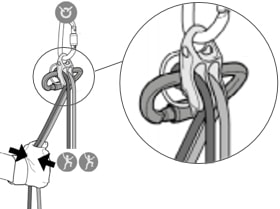
Mechanical Brake Assist DevicesThere is no difference in the functionality of the device. A brake-hand should always be on the rope to ensure the climber is caught in the case of a fall. A common guide mode setup shown below. 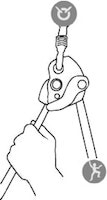
Where guide mode is used
Learn Morehttp://www.climbing.com/skill/essential-skills-auto-blocking-belay-devices/ |
1 follower only |
Teeth  TeethTeeth are only seen on tube devices. They add friction that helps grip the rope for more belaying control. This is helpful for belaying heavier climbers. Teeth are becoming standard on new tube devices. 
Worth ConsideringTeeth do wear out. You can limit wear by rappelling on the side without teeth (if you don’t need the extra friction). Once they’re worn, you’ll still have a usable belay device, just less friction. |
No |
Rope Range (mm)  Rope Range (mm)The range of rope diameters, in millimeters, that the manufacturer/brand specifies can safely be used. This is the best case scenario and does not necessarily take into consideration that certified ropes have a tolerance of +/- .3 mm. Recently, manufacturers have started to add an "optimized" rope range -- this is the range that will result in the nicest handling of the belay device. | 8.5 mm - 11.0 mm |
Certification  CertificationsThe main climbing gear certifications are CE and UIAA--and normally the UIAA creates the rules that the CE body also supports. When possible, we try to list all the certifications the product carries. To sell a climbing product in Europe, the device must be CE certified. There are no official requirements to sell climbing gear in the US. The UIAA certification is a voluntary process. Learn MoreRock and Ice Certifications Guide |
EN |
No reviews yet.
The Wild Country Revo is in a class of its own, with no other belay devices offering similar function and features. We laud its innovation and think it is more than worthy of a Top Pick award because it offers a solid and proven emergency backup while still requiring standard belay technique. For beginners or experienced climbers alike, this is an excellent choice for use cragging or at the gym.
This device is designed to operate as any other tube style belay device: you belay (top rope and lead) and lower as you would with a standard tube device. This helps keep the functionality and usability of the device at a very low learning level. The best benefit I found was giving this device to clients to belay me or others with as it operates the exact same as our tube devices with the added function of the back up: lower too fast or climber falls without a hand on the break strand? No worries, the device will lock quite quickly. How quickly? To test this I grabbed a fellow guide and took some whippers. We a tied a catastrophe knot roughly 3 feet away from the device on the break strand side and had the climber take a fall without having hands on the break strand. The device locked on its own after roughly 2 feet or less of rope went through the device.
In terms of catching falls, the Revo works like a tube-style device, letting a little slack slip through organically to give a dynamic catch, which means you don’t need to be that aggressive with the up or forward “soft catch” jump. And, of course, if you let too much slack slip through, it will lock up. To consider, however, is that if you properly catch a fall, the locking mechanism will not engage, meaning if your climber starts rage-batmanning back to their high point or wants to do an extended dogging session, it’s going to be on you, as the belayer, to manage the rope, reeling it in and locking it off in tube-style mode. (One subtle method that works for engaging the locking mechanism is to pull down on the climber side of the rope to release tension, engage the cam/jaw with your index finger, then slowly sit back on the rope to take out the slack—this does take some practice.)
I’ll continue to test the Revo long-term. My initial impressions indicate that I’ll still prefer the convenience of a GriGri+ if hangdogging is on the agenda. For all other uses, I’ll keep using the Wild Country Revo. I like that it keeps my belaying skills intact, even improving them. I’ll keep an eye on durability, particularly the potential for damage from dirt infiltration.
As the first bi-directional assisted-braking belay device, the Revo promises that a climber will never misthread the rope, which eliminates one of the biggest dangers in assisted-braking devices. The Revo opens easily, and the rope can be threaded with the climber’s end coming out of either side. Testers found that the device never locked up while pulling out slack, meaning no short-roping, even on long and fast clips. Despite this, the device locked up quickly when climbers, both light and heavy, fell. Because the rope goes around a moving circular center, it slides through the Revo with little resistance. Lowering the climber only requires the belayer to pull the rope down into the brake position—no lever required. The locking mechanism can’t be overridden to leave the device open, which is great for new belayers but could be problematic for advanced techniques. It is slightly bulky, but testers agreed that it was one of the best assisted-braking belay devices they’ve used. Bonus: Because the Revo doesn’t rely on friction to brake, it performed equally well on thin and fat cords alike.

